What is Schutzhund?

Schutzhund is a dog sport that was designed for breeders to measure the working ability of their dogs. The information gained from a Schutzhund trial is to be used as a tool in selecting breeding partners.
What Is Schutzhund?
Schutzhund is a German word meaning "protection dog." It refers to a sport that focuses on developing and evaluating those traits in dogs that make them more useful as breeding dogs and happier companions to their owners.
The original purpose for the sport of Schutzhund was to develop a dog sport that could measure the working ability of the dog so that information could be used in a breeding program to develop better working dogs with good temperaments.
Schutzhund work concentrates on three parts. Many familiar with the obedience work of the American Kennel Club's affiliates will recognize the first two parts: tracking and obedience. The Schutzhund standards for the third part, protection work, are similar in some ways (not all) to police work or personal protection work.
While dogs of other breeds are also admitted to Schutzhund trials, this breed evaluation test was developed specifically for the German Shepherd Dog. Schutzhund is intended to demonstrate the dog's intelligence and utility. As a working trial, Schutzhund measures the dog's mental stability, endurance, structural efficiencies, ability to scent, willingness to work, courage, and trainability.
This working dog sport offers an opportunity for dog owners to train their dogs and compete with each other for recognition of both the handler's ability to train and the dog's ability to perform as required. It is a sport enjoyed by persons of varied professions, joining together in a camaraderie born of their common interest in working with their dogs. Persons of all ages and conditions of life—even those with significant disabilities—enjoy Schutzhund as a sport. Often, it is a family sport.
The Three Parts Of A Schutzhund Trial
The Tracking Phase
The Tracking Phase includes a temperament test by the overseeing judge to assure the dog's mental soundness. When approached closely on a loose leash, the dog should not act shyly or aggressively. The track is laid earlier by a person walking normally on a natural surface such as dirt or grass. The track includes a number of turns and a number of small, man-made objects left by this person on the track itself. At the end of a 30-foot leash, the handler follows the dog which is expected to scent the track and indicate the location of the objects, usually by lying down with it between its front paws. The tracking phase is intended to test the dog's trainability and ability to scent, as well as its mental and physical endurance.
The Obedience Phase
The Obedience Phase includes a series of heeling exercises, some of which are closely in and around a group of people. During the heeling, there is a gunshot test to assure that the dog does not openly react to such sharp noises. There is also a series of field exercises in which the dog is commanded to sit, lie down, and stand while the handler continues to move. From these various positions, the dog is recalled to the handler. With dumbbells of various weights, the dog is required to retrieve on a flat surface, over a one-meter hurdle, and over a six-foot slanted wall. The dog is also asked to run in a straight direction from its handler on command and lie down on a second command. Finally, each dog is expected to stay in a lying down position away from its handler, despite distractions at the other end of the obedience field, while another dog completes the above exercises. All of the obedience exercises are tests of the dog's temperament, structural efficiencies, and, very importantly, its willingness to serve man or woman.
The Protection Phase
The Protection Phase tests the dog's courage, physical strength, and agility. The handler's control of the dog is absolutely essential. The exercises include a search of hiding places, finding a hidden person (acting as a human decoy), and guarding that decoy while the handler approaches. The dog is expected to pursue the decoy when an escape is attempted and to hold the grip firmly. The decoy is searched and transported to the judge with the handler and dog walking behind and later at the decoy's right side. When the decoy attempts to attack the handler, the dog is expected to stop the attack with a firm grip and no hesitation.
The final test of courage occurs when the decoy is asked to come out of a hiding place by the dog's handler from the opposite end of the trial field. The dog is sent after the decoy when he attempts to run away. Just when the dog is about to catch the decoy, the judge signals the decoy to turn about and run directly at the dog, threatening the dog with a stick. All bites during the protection phase are expected to be firmly placed on the padded sleeve and stopped on command and/or when the decoy discontinues the fight. The protection tests are intended to assure that the dog is neither a coward nor a criminal menace.
Schutzhund Around The World
The first Schutzhund trial was held in Germany in 1901 to emphasize the correct working temperament and ability of the German Shepherd breed. Originally, these dogs were herding dogs. But the industrialization of Germany encouraged breeders to promote the use of their dogs as police and military dogs. The Verein fur Deutsche Schaferhunde (SV), the parent club, became concerned that this would lead to careless breeding and undesirable traits such as mental instability, so it developed the Schutzhund test.
Since then, many other countries and working dog organizations have also adopted Schutzhund as a sport and test of working performance in dogs. International rules have been established, and they are administered by the Verein fur Deutsche Hundesport (VDH).
In 1970, the first Schutzhund trial in the U.S. was held in California. In 1987, the United Schutzhund Clubs of America alone sanctioned nearly 300 trials with a total entry of about 1,800 dogs/handler teams. More than 17 countries sent teams of competitors to the World Championship for Schutzhund dogs from the World Union of German Shepherd Clubs.
The Schutzhund Titles
There are three levels of the Schutzhund test. For Schutzhund I the dogs must be at least 14 months old and pass an initial temperament test by the judge. The dog must heel on the leash and off, demonstrate the walking sit, the walking down, and the stay tests, as well as the send-out. It must retrieve on the flat and over a hurdle. In tracking, it must be able to follow a track laid by its handler at least 20 minutes earlier. There are also protection tests.
For Schutzhund II the dog must be at least 16 months old and must already have earned its Schutzhund I degree. It must again pass all of the obedience and protection tests required for the Schutzhund I degree, but those tests, for Schutzhund II, are made more difficult and require greater endurance, agility, and, above all, control. There is an additional retrieve required over the six-foot slanted wall. In tracking, the Schutzhund II candidate must be able to follow a track laid by a stranger at least 30 minutes earlier.
For Schutzhund III, the master's degree, the dog must be at least 18 months old and must have earned both the Schutzhund I and the Schutzhund II titles. Again, the tests now are made far more difficult. All exercises in obedience and protection are demonstrated off leash. There is the addition of a walking and running stand. In tracking, the dog must follow a track that was laid by a stranger at least 50 minutes earlier. The track has four turns, compared with two turns for Schutzhund I and II, and there are three objects, rather than two, that must be found by the dog. The picture of obedience, strength, eagerness, and confidence presented by an excellent Schutzhund III team is a beautiful illustration of the partnership between human and dog.
The Value To The Breed
Any registered German Shepherd that has earned a Schutzhund degree has demonstrated sufficient ability as a working dog to qualify for breed evaluation. The breed evaluation is a very detailed examination of the dog's structure, temperament, and pedigree and requires both a certification of good hip joints and sufficient performance on an endurance test (the AD). Dogs that do well in the breed evaluation receive a Koerklasse I or Koerklasse II. This is a recommendation and evaluation by a trained and recognized expert judge as to the worthiness of the dog for breeding. Dogs rated Koerklass II are "suitable for breeding" and dogs rated Koerklass I are "recommended for breeding." By thus screening dogs in order to select the suitable specimens for breeding, Schutzhund help maintain the quality of the breed at a very high level. Thus, there is a very high level of assurance that puppies born to Schutzhund dams and sired by Schutzhund dogs are more likely to be of reliable temperament, high intelligence, steady nerves, extreme endurance, great strength, and sound structure.
What Is The Judge Looking For In The Dog?
At all three stages - Schutzhund I, II, and III - each of the three phases: obedience, tracking, and protection, is worth 100 points, for a total of 300 points. If a dog does not receive a minimum of 70% of the points in tracking and obedience and 80% of the points in protection - or if the dog fails the pretrial temperament test - it is not awarded a degree that day and must repeat the entire test, passing all phases of the test at a later trial. In every event, the judge is looking for an eager, concentrating, accurate working dog. High ratings and scores are given to the animal that displays a strong willingness and ability to work for its human handler.
The Schutzhund-Trained Dog In The Home
Since Schutzhund is the demonstration of the German Shepherd dog's most desirable characteristics, dogs well trained in Schutzhund are usually excellent companions in the home. The German Shepherd Dog—like any other working dog that possesses mental stability—has trust and confidence in itself, allowing it to be at peace with its surroundings.
In addition to sound structural efficiencies for long, arduous work, the standard for the German Shepherd Dog calls for mental stability and a willingness to work. The dog should be approachable, quietly standing its ground, showing confidence and a willingness to meet, overtures without itself necessarily making them. It should be fearless, but also good with children.
The German Shepherd Dog should not be timid or react nervously to unusual sounds or sights. A dog that is overly aggressive because of its overall fears of people and events can be extremely dangerous. The Schutzhund sport is designed to identify and eliminate such dogs from breeding stock. Because Schutzhund training gives the owner a great deal of control over the dog, the owner is able to let the dog have more fun. Not only is Schutzhund training itself enjoyable for the dog, but the Schutzhund trained dog knows how to please its owners, creating a stronger bond between dog and owners.
The Schutzhund-Trained Dog For Police Work
A dog that performs well in Schutzhund can occasionally (not always) work as a police service dog. Police dogs, like other service dogs, must have temperaments with a good foundation of intelligence and utility. A minimal amount of additional training makes many well-trained Schutzhund dogs ready for active police duty. Such fearless police dogs can work around children and crowds without worry on the part of their handlers.
Choosing A Puppy For Schutzhund
In every breed, the pedigree is the key to knowing the potential of the puppy. Schutzhund revolves around working lines - generations of dogs that have proven themselves and produced similar characteristics in their offspring. These characteristics include not only the physical structure of the dog, which is very important, but also its temperament.
Selecting the bloodlines from which you want your puppy may require advice. Information from breed surveys can help. Of course, it makes sense to discuss your objectives with reputable and experienced Schutzhund handlers or enthusiasts.
Once you have determined that the bloodlines of the potential dam and sire are of high quality, you should observe the parents, especially the mother, if that is at all possible. The dam will be the main influence on the young pup for the first six weeks of its life. If the dam is nervous or unsure, chances are this uncertainty will be transferred to the offspring.
If you are able to see the litter, watch the puppies together and also separately, to try to determine which is the best puppy. Obvious structural defects or health problems should be watched for.
It is important that the puppy have an intense instinct to stalk the prey whether it be a ball, a toy, etc. It should also be the leader in the sense of bullying the other puppies. The puppy should not show fear when away from its littermates. It should not need to stay with the mother. The puppy should be adventurous and active, playing with objects shown to it by someone in the enclosure, but it should be independent enough to take that object and go off on its own as well.
It is independent and confident, combined with the positive contact with the pack leader (the dame at the time) that will develop into the traits of trainability that you need.
View Bernhard Flinks Puppy Selection Scoresheet.
Raising A Puppy for Schutzhund Work
Puppyhood is the most critical period for the development of the characteristics you want to encourage. Your local Schutzhund club can advise you about nurturing and socializing your growing puppy.
A puppy learns from its experiences, so you want to provide only positive ones. It should be provided with the opportunity to explore and investigate new situations and new people, but always in a non-threatening way. Remember that your goal is to build confidence in the young animal. Your aim is not to dominate or oppress the young pup.
Exposure to different environments is crucial to the general education of the dog and also to assure it that the world is a safe place. If something appears to make the dog unsure, give it the opportunity to investigate it slowly, but do not force the issue.
It is imperative to avoid situations where your dog would be dominated by another, older or stronger dog, or by another puppy. You also want to avoid having to discipline or correct your puppy and thus dampen its spirit or damage its self-confidence. You can do this by never leaving the pup in a situation where it can cause damage to your valuables or find itself in a dangerous predicament.
The final area of development is that of drive encouragement. The natural behaviors that you want to encourage are playing with the ball, tug of war, hide and seek, pulling toys on a string, pursuing you rapidly when you run away, and finally defending itself, its family, and its home. The latter really only shows itself between the ages of nine and 18 months, as the pup begins to mature, by barking at strangers or intruders.
It is better to leave for later formal obedience training with a younger dog. The character of the puppy is not sufficiently strong to withstand the corrections involved in obedience training. Acceptable manners at home and in the car and "play" training (like learning to sit for a food reward with no corrections involved) is advisable. Real obedience work should begin only after the dog is well on its way in protection training.
Do Dogs Enjoy Schutzhund Training?
If trained in the right manner, dogs enjoy working, as anyone who attends a Schutzhund competition can see. The joy of the dogs in working with their handlers is evident.
For thousands of years, dogs have adapted to serve humans in a naturally beneficial relationship. While dogs could move quickly, hunt prey, and protect flocks and their owner, the humans could provide food, shelter from the most severe elements, and protection from larger predators, besides tending to the dog's injuries.
Schutzhund training helps develop the dog's natural instincts to a high level. Self-confident dogs, doing work for which they are well-trained, are happy dogs. Wagging tails, sounds of excitement, and strong pulling on a leash all show an observer at a Schutzhund trial how much fulfillment dogs find in this work.
What Is The Worst Part About Schutzhund?
Politics are the worst part of this sport.
In my opinion Schutzhund USA is a corrupt organization with weak leadership. I was a member of Schutzhund USA from 1976 to 2008 and it saddens me to have to make these claims.
Schutzhund USA fosters a good old boy network that empowers bullies in the sport who have elevated cheating to an acceptable level of tolerance.
If you are considering training in this sport, I strongly recommend that you look at the DVG. The DVG is an all-breed Schutzhund organization with origins in Germany.
In fact, a better choice would be to look at the Mondioring sport rather than Schutzhund. The Mondioring is a relatively new dog sport that the dogs love. It has no tracking. Had Mondioring come to American in the early 1970s like Schutzhund did back then, Mondio would be the dominant biting sport in America today.




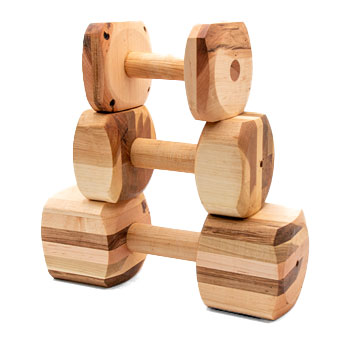
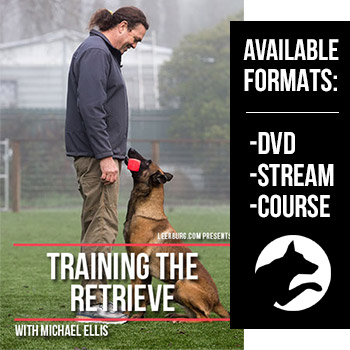
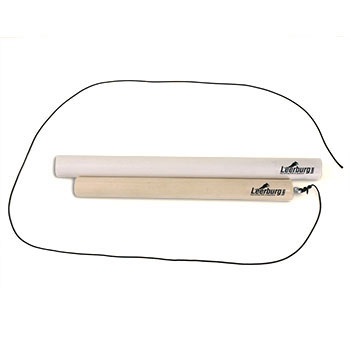


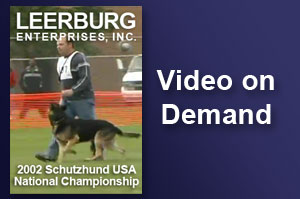
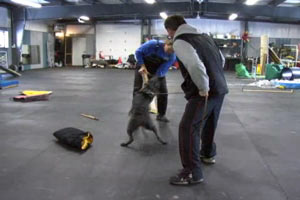
0 Comments
Ask Cindy
Sorry, adding comments is currently disabled.